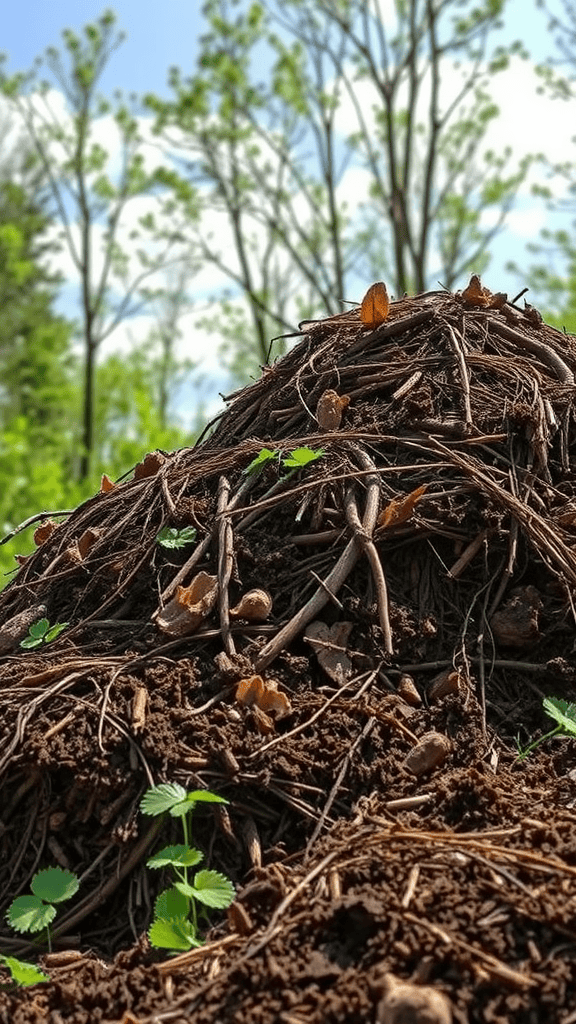Understanding Aerated Static Pile Composting: Principles and Benefits
Aerated Static Pile Composting is an efficient method of composting that maximizes the breakdown of organic materials. By understanding its principles and benefits, both individuals and communities can manage organic waste more effectively. This process relies on the natural activity of microorganisms to decompose organic material, but enhances their efficiency with aeration.
The foundation of this composting method lies in creating a static pile that is well-aerated. Aeration is crucial because it supplies oxygen to the microorganisms responsible for decomposition. Unlike traditional composting methods, where turning the pile is necessary to introduce air, the aerated static pile uses a system to maintain aeration without disturbing the material.
How Aerated Static Pile Composting Works
The process begins with collecting organic waste, which can include:
- Fruit and vegetable scraps
- Yard waste like leaves and grass clippings
- Manure from herbivorous animals
- Wood chips and sawdust
Once the materials are gathered, they are layered into a pile. However, before layering, it is essential to ensure the right carbon-to-nitrogen ratio, usually about 25-30:1 for optimal decomposition. Carbon-rich materials like dry leaves or straw are mixed with nitrogen-rich materials, like kitchen scraps. This balance encourages healthy microbial activity.
The pile is then equipped with a forced-air system. This system injects air through perforated pipes or tubes to maintain adequate oxygen levels within the pile. Since the pile is static, there’s no need to turn it, which means less labor and reduced disturbance to the microbes working within.
Key Principles of Aerated Static Pile Composting
Understanding the core principles of aerated static pile composting will help you appreciate its effectiveness:
- Microbial Activity: Microorganisms, such as bacteria and fungi, break down organic materials. Aeration keeps them active and thriving.
- Temperature Control: As microorganisms decompose the material, they generate heat. A good system helps maintain an optimal temperature range of around 130-160°F (54-71°C) to encourage rapid decomposition and kill pathogens.
- Moisture Management: Composting requires a certain level of moisture. Regular monitoring ensures it doesn’t get too dry or too wet, both of which can hinder the process.
- Time Frame: This method can produce finished compost in 4 to 12 weeks, depending on conditions and materials used.
Benefits of Aerated Static Pile Composting
Adopting aerated static pile composting can offer numerous benefits for your waste management:
- Efficiency: The enhanced aeration leads to faster decomposition compared to traditional methods.
- Space-Saving: The method requires less area since the piles can be high and compact.
- Minimal Labor: Once the system is set up, there’s little effort needed to maintain it, as it minimizes the need for turning.
- Odor Control: Proper aeration reduces the risk of odors that can develop with anaerobic decomposition.
- High-Quality Compost: The result is nutrient-rich compost, ideal for gardens, landscaping, or agriculture.
Choosing aerated static pile composting not only helps you manage waste but also contributes positively to the environment. It fosters a sustainable practice while enriching soil health. Whether you’re a homeowner looking to reduce kitchen waste or a community managing larger organic waste, adopting this method can lead to significant benefits.
Aerated static pile composting into your waste management strategy is a wise choice. It combines science with simple practices to harness the power of nature, turning trash into treasure. By understanding how it works and its various advantages, you can become part of the solution to waste management challenges.
Key Factors Influencing the Efficiency of Aerated Static Pile Composting
Aerated static pile composting is an effective method that can drastically improve composting efficiency. If you want to understand how to get the most out of this system, it’s essential to consider several key factors that play a significant role in its efficiency. Let’s explore these elements to help you maximize the benefits of aerated static pile composting.
Material Composition
The type and quality of materials you use for composting is one of the most crucial factors. A balanced mix of green and brown materials is necessary. Green materials, rich in nitrogen, include grass clippings and vegetable scraps, while brown materials, high in carbon, include dried leaves and branches. The ideal C:N (Carbon to Nitrogen) ratio should be around 30:1. If this ratio is too off-balance, it may lead to unpleasant odors or slow decomposition.
Moisture Content
Another essential aspect is the moisture level in your compost pile. It’s vital to maintain an adequate moisture content of around 50-60%. If it’s too dry, microbial activity will slow down, while excess moisture can lead to anaerobic conditions, resulting in foul smells. You can use a simple squeeze test to gauge moisture—if a handful of compost holds together but doesn’t drip, you’re on the right track.
Airflow Management
Proper airflow is crucial in aerated static pile composting. By using perforated pipes or a fan system to introduce air, you can encourage the growth of aerobic bacteria. Aerobic bacteria are efficient decomposers that break down materials faster and produce less odor. Ensure that air is evenly distributed throughout the pile to maintain aerobic conditions.
Temperature Control
Monitoring the temperature of your compost pile can significantly influence its efficiency. A well-functioning compost pile should reach temperatures between 130°F and 160°F (54°C to 71°C) during the active decomposition phase. This temperature range helps to kill pathogens and weed seeds. You can control the temperature by adjusting the moisture level and airflow, ensuring that the composting process remains active.
Pile Size and Structure
The size and structure of your compost pile can also affect aeration and decomposition speed. For optimal performance, static piles should ideally be between 4 to 8 feet wide to ensure proper aeration. A well-structured pile allows air to reach the center, promoting more efficient decomposition. If the pile is too small, it may not retain heat, and if it’s too large, airflow may become restricted.
Periodic Monitoring and Turning
Regularly monitoring your compost pile is essential. Look for signs like heat levels, moisture content, and the overall smell. If you notice any issues, turning the pile may help to redistribute materials and improve airflow. This is particularly effective in the first stages of composting. However, remember that constant turning may disrupt static systems designed for minimal intervention.
Microbial Diversity
Encouraging a diverse microbial community can significantly impact composting success. Different microbes thrive in different conditions. By adding compost from an established pile or using specific inoculants, you can enhance microbial activity. This biodiversity can speed up the breakdown of organic matter, creating high-quality compost in less time.
Environmental Conditions
Consider the external environmental conditions. Factors such as temperature, precipitation, and humidity can influence your compost pile’s performance. For example, during colder months, you may need to insulate your pile to maintain temperature. During hot, dry months, you might need to add water more frequently to keep moisture levels steady.
By paying attention to these elements—material composition, moisture content, airflow, temperature control, pile size, monitoring, microbial diversity, and environmental conditions—you can significantly enhance the efficiency of your aerated static pile composting system. With these strategies, you’ll not only create rich compost more quickly but also contribute positively to your garden or landscape.
Conclusion
Aerated static pile composting is an innovative method that can revolutionize the way we manage organic waste. By integrating controlled aeration, this approach enhances microbial activity, expedites the decomposition process, and produces high-quality compost. Understanding the principles behind this technique highlights its numerous benefits, such as reduced odors, lower methane emissions, and the ability to handle larger volumes of material in a shorter timeframe.
The key factors that influence the efficiency of aerated static pile composting cannot be overlooked. Proper management of moisture content, temperature, and substrate composition are essential to achieving optimal results. Each element plays a pivotal role in fostering an environment where beneficial microbes thrive, ensuring that the composting process is both effective and sustainable.
For those considering this composting method, attention to these factors ensures success and contributes positively to environmental health. Implementing aerated static pile composting not only promotes waste reduction but also aligns with eco-friendly practices, making it a practical choice for communities and businesses alike. embracing this method can significantly enhance soil health, support plant growth, and lead to a more sustainable future. With its unique advantages and manageable requirements, aerated static pile composting stands out as a promising solution in the realm of organic waste management.
As an Amazon Associate, I earn from qualifying purchases.

